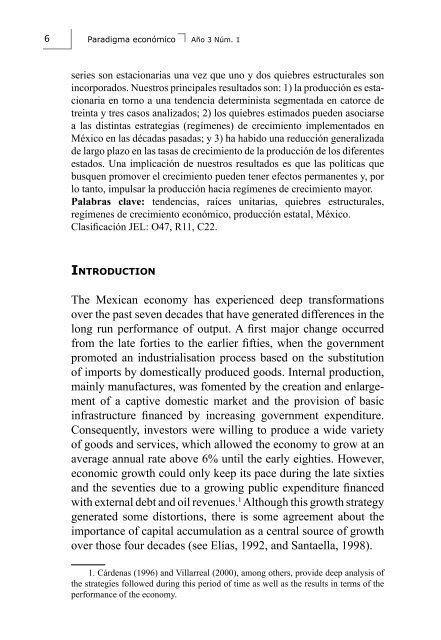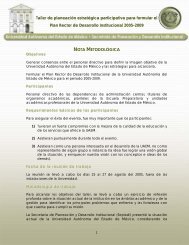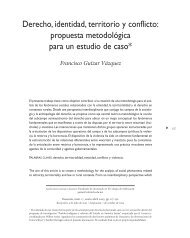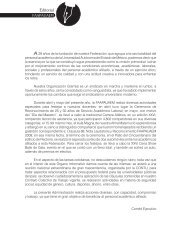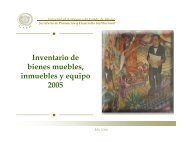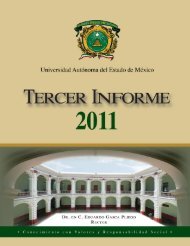Editorial - Universidad Autónoma del Estado de México
Editorial - Universidad Autónoma del Estado de México
Editorial - Universidad Autónoma del Estado de México
You also want an ePaper? Increase the reach of your titles
YUMPU automatically turns print PDFs into web optimized ePapers that Google loves.
6 Paradigma económico Año 3 Núm. 1<br />
series son estacionarias una vez que uno y dos quiebres estructurales son<br />
incorporados. Nuestros principales resultados son: 1) la producción es estacionaria<br />
en torno a una ten<strong>de</strong>ncia <strong>de</strong>terminista segmentada en catorce <strong>de</strong><br />
treinta y tres casos analizados; 2) los quiebres estimados pue<strong>de</strong>n asociarse<br />
a las distintas estrategias (regímenes) <strong>de</strong> crecimiento implementados en<br />
<strong>México</strong> en las décadas pasadas; y 3) ha habido una reducción generalizada<br />
<strong>de</strong> largo plazo en las tasas <strong>de</strong> crecimiento <strong>de</strong> la producción <strong>de</strong> los diferentes<br />
estados. Una implicación <strong>de</strong> nuestros resultados es que las políticas que<br />
busquen promover el crecimiento pue<strong>de</strong>n tener efectos permanentes y, por<br />
lo tanto, impulsar la producción hacia regímenes <strong>de</strong> crecimiento mayor.<br />
Palabras clave: ten<strong>de</strong>ncias, raíces unitarias, quiebres estructurales,<br />
regímenes <strong>de</strong> crecimiento económico, producción estatal, <strong>México</strong>.<br />
Clasificación JEL: O47, R11, C22.<br />
Introduction<br />
The Mexican economy has experienced <strong>de</strong>ep transformations<br />
over the past seven <strong>de</strong>ca<strong>de</strong>s that have generated differences in the<br />
long run performance of output. A first major change occurred<br />
from the late forties to the earlier fifties, when the government<br />
promoted an industrialisation process based on the substitution<br />
of imports by domestically produced goods. Internal production,<br />
mainly manufactures, was fomented by the creation and enlargement<br />
of a captive domestic market and the provision of basic<br />
infrastructure financed by increasing government expenditure.<br />
Consequently, investors were willing to produce a wi<strong>de</strong> variety<br />
of goods and services, which allowed the economy to grow at an<br />
average annual rate above 6% until the early eighties. However,<br />
economic growth could only keep its pace during the late sixties<br />
and the seventies due to a growing public expenditure financed<br />
with external <strong>de</strong>bt and oil revenues. 1 Although this growth strategy<br />
generated some distortions, there is some agreement about the<br />
importance of capital accumulation as a central source of growth<br />
over those four <strong>de</strong>ca<strong>de</strong>s (see Elías, 1992, and Santaella, 1998).<br />
1. Cár<strong>de</strong>nas (1996) and Villarreal (2000), among others, provi<strong>de</strong> <strong>de</strong>ep analysis of<br />
the strategies followed during this period of time as well as the results in terms of the<br />
performance of the economy.


